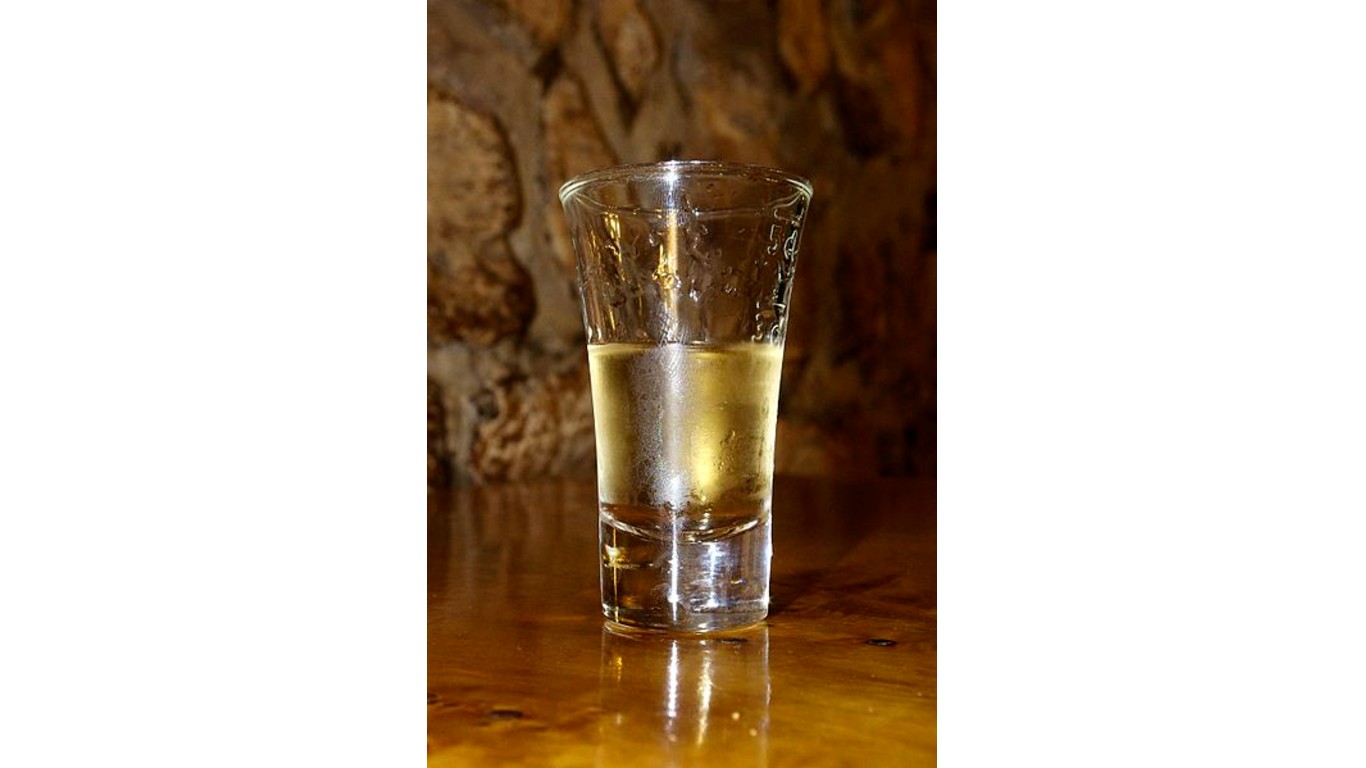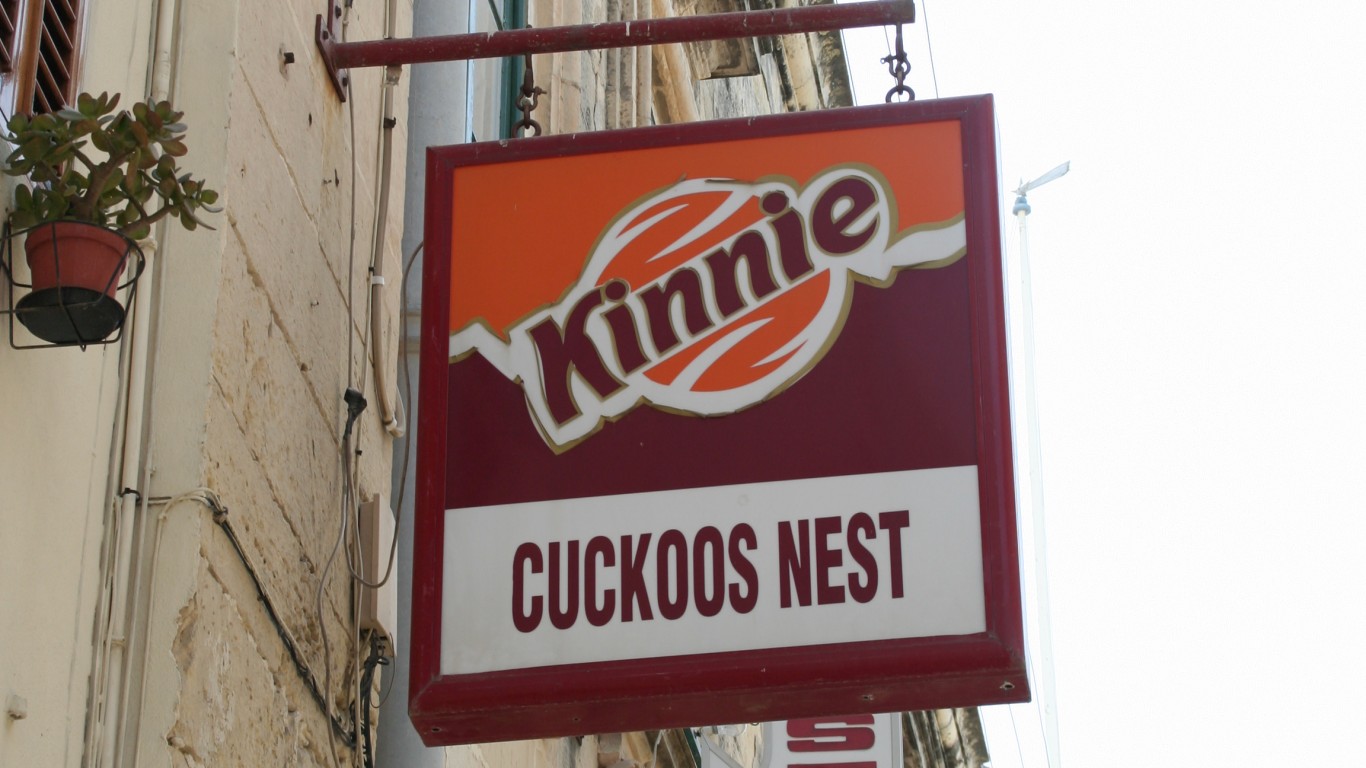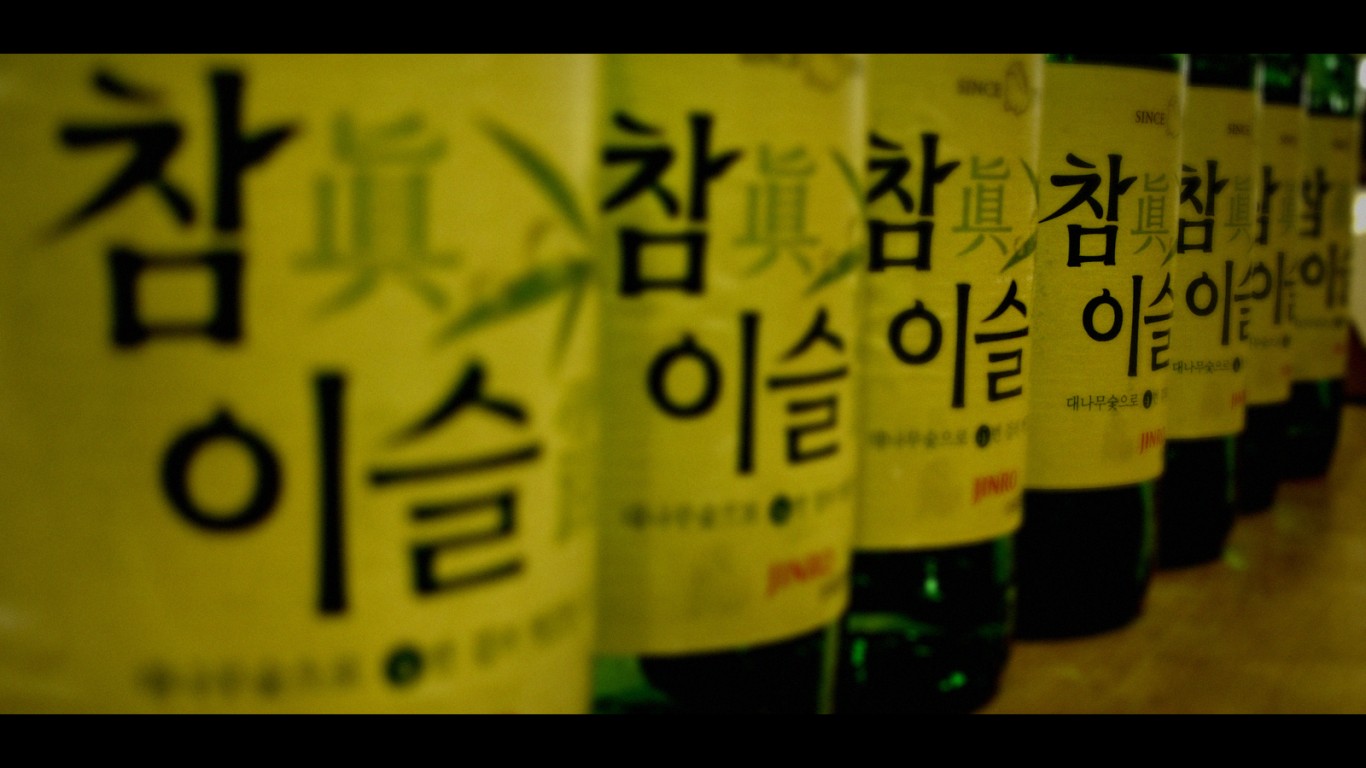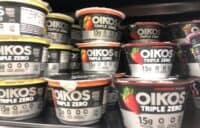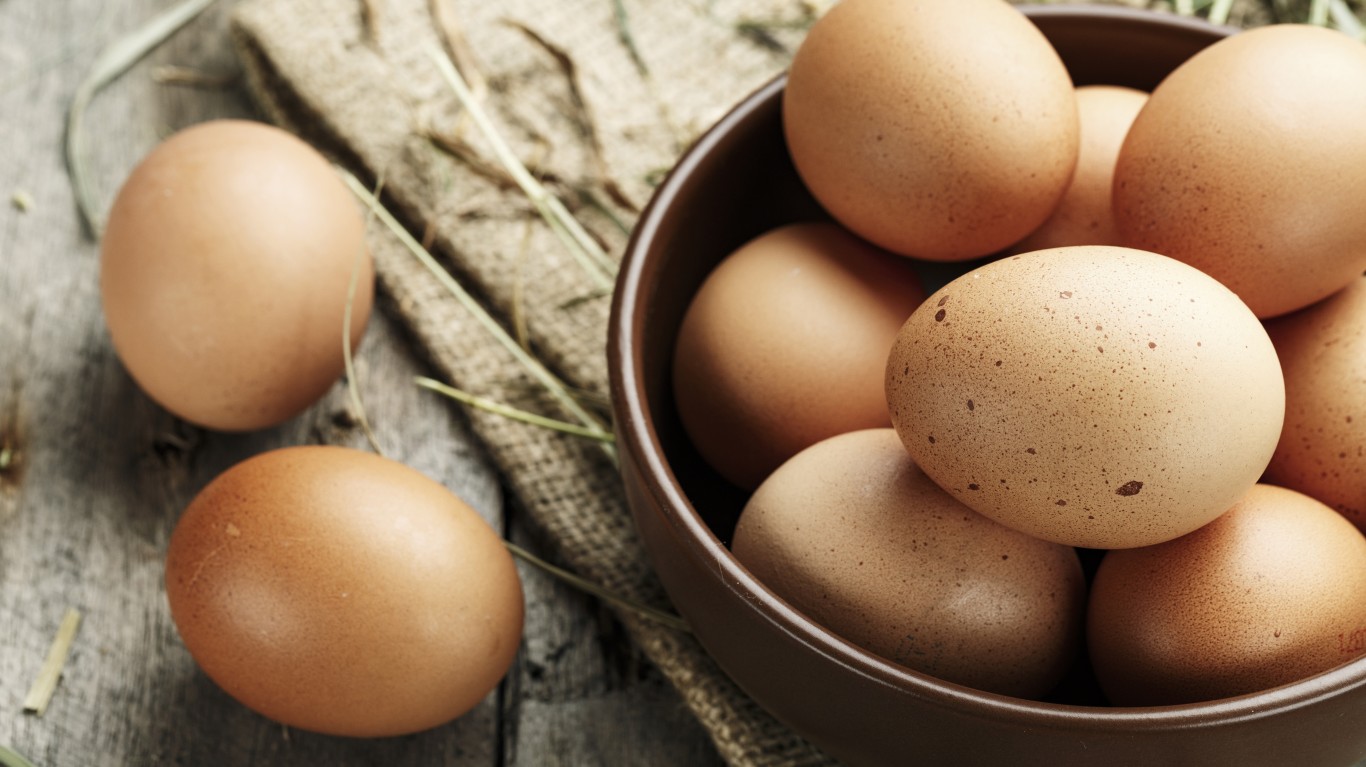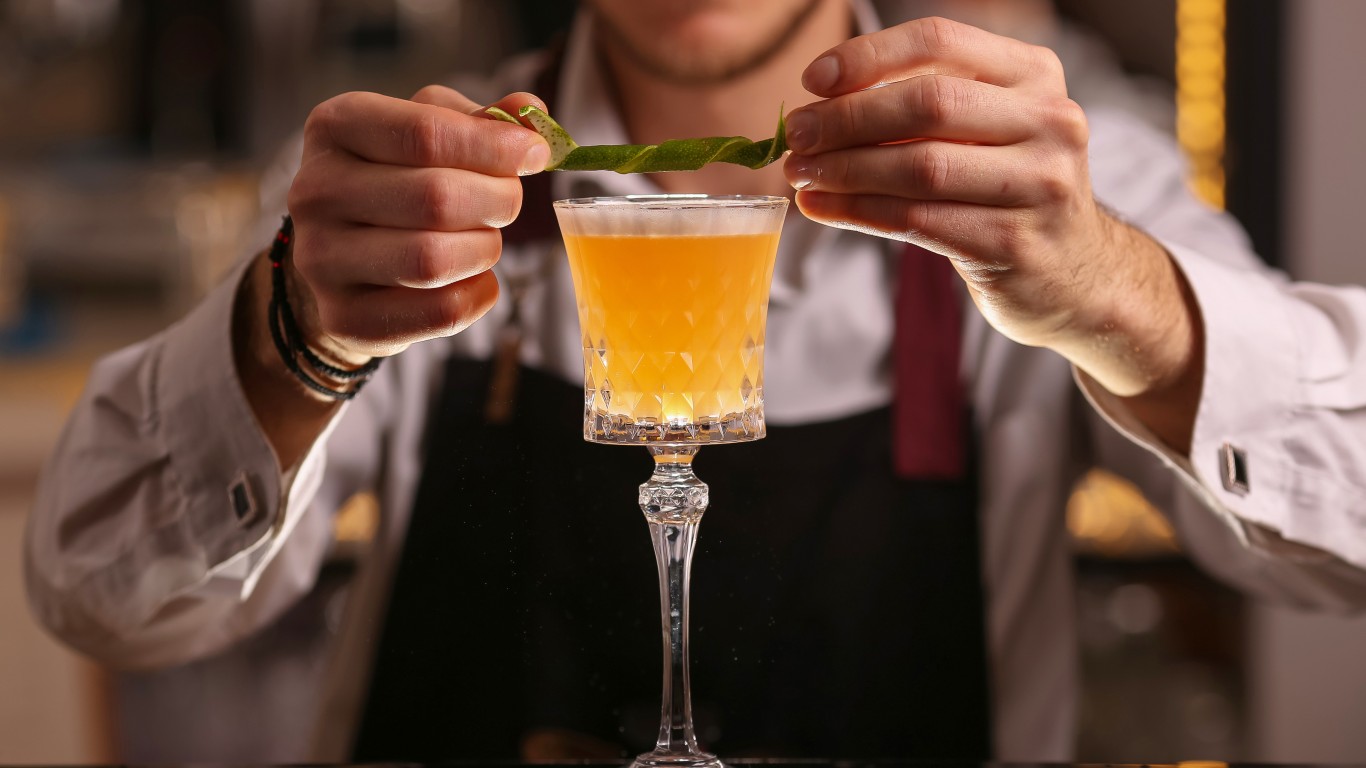
Most countries around the world produce and enthusiastically consume alcoholic beverages of various kinds. The exceptions are primarily those with a majority Muslim population — Islam eschews alcohol — and even some of those (for instance Morocco and Turkey) have wineries and distilleries for the benefit of non- (and non-observant) Muslims.
It’s not surprising that various forms of wine, beer, or spirits have come to be considered emblematic of certain countries — but there are also plenty of non-alcoholic beverages that have evolved into the signature drinks of one nation or another.
Reviewing a number of alcoholic beverage industry publications, national tourist bureau sites, and various pop culture sources, 24/7 Tempo has assembled a list of signature drinks from some 35 countries.
In America, the legislatures in some 29 states have designated at least one official state drink, alcoholic or otherwise. For 20 of these, presumably all major dairy producers, the official drink is milk. These are signature drinks from every state.
Entire countries, on the other hand, seldom if ever make official pronouncements on the subject, so in some cases the identity of the beverage most closely associated with a particular nation might be open to debate.
Click here to see signature drinks from 35 countries
Whether fiery fruit brandy, herbal tea, beer variety, branded soft drink, or anything else quaffable, however, everything on this list occupies a special place in the cups or glasses — and on the palates — of the people of the place in question. (In the case of beer, it’s interesting to note what beer costs in 58 cities around the world.)
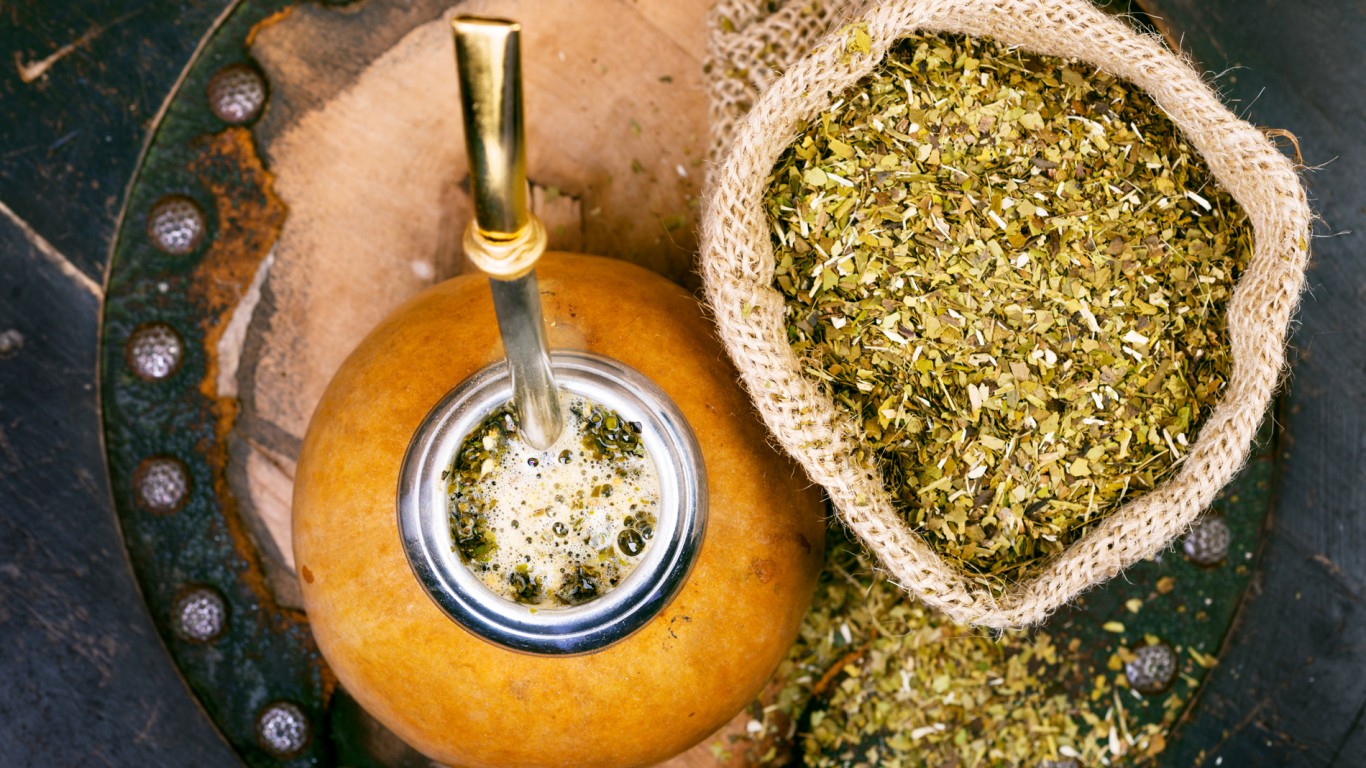
Argentina: Mate
Mate (“mah-tay”) is a highly caffeinated herbal tea made from the dried leaves of a kind of holly plant. It has been popular in much of South America since pre-Columbian times, and is the national drink of Argentina (as well as Uruguay and Paraguay). It is traditionally sipped through a metal straw, often from a bulbous cup made from a calabash gourd.
[in-text-ad]
Belarus: Byarozavik
A traditional favorite in this former Soviet Socialist Republic, Byarozavik is birch tree water — that is, a beverage made with the mineral-rich sap of the birch tree, collected every spring. Said to be similar to coconut water in electrolyte and micronutrient content, it’s crisp, with a faint lemony flavor.
Belgium: Lambic beers
Beer has been produced in Belgium since Roman times, in a wide range of styles. What’s unique to Belgium is the class of beers called lambics. Lambic is a wheat beer fermented with wild yeasts found only in the Zenne Valley, not far from Brussels. It’s sold primarily on draught, in or near that city. There are several types of lambic beer: Faro is young lambic; Gueuze is a blend of young and old beers; and Kriek and framboise are lambics macerated with cherries or raspberries, respectively.
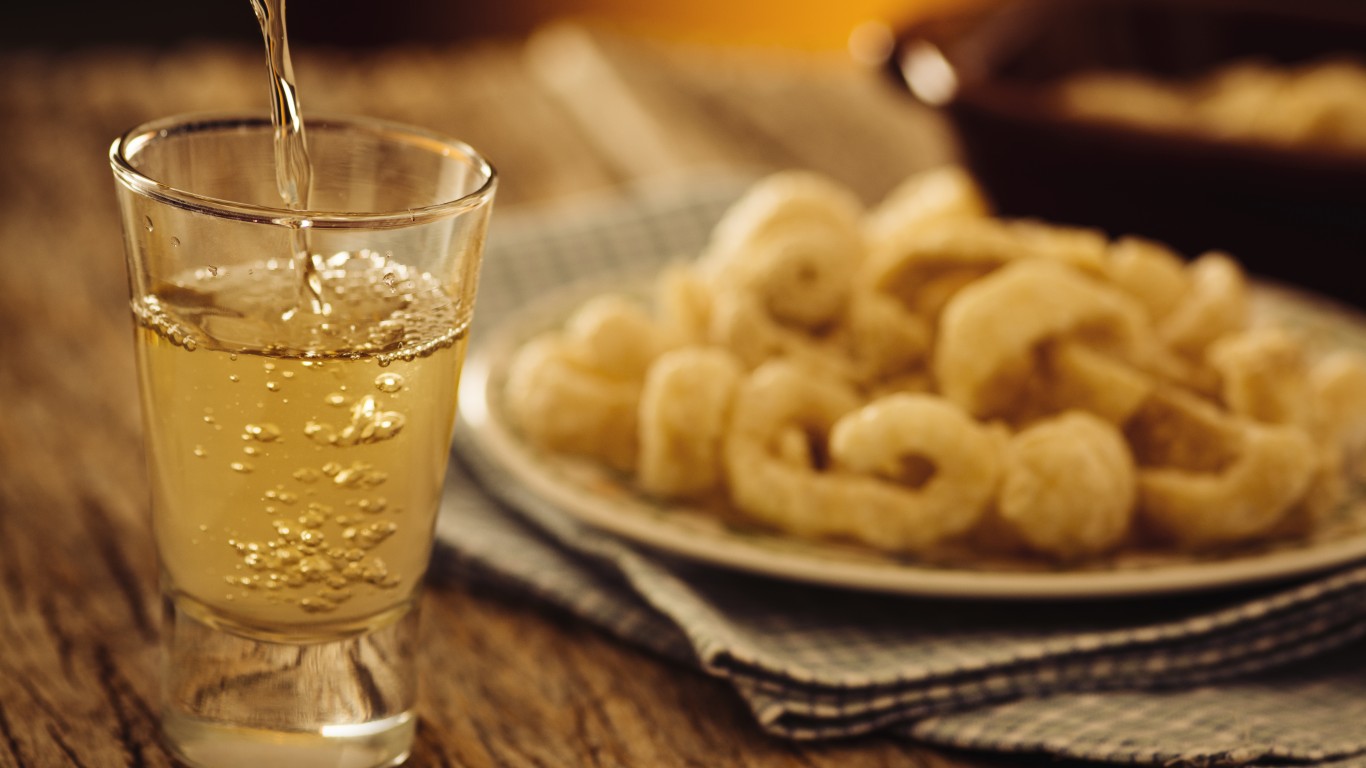
Brazil: Cachaça
Cachaça is a relative of rum, distilled from fermented sugarcane juice (most rum is made from molasses). There are said to be as many as 40,000 producers of cachaça across Brazil. While there are versions aged in barrels made from tropical hardwoods, the bulk of the production is “white” and most popularly consumed mixed with sugar and crushed mint in Brazil’s most famous cocktail, the caipirinha.
[in-text-ad-2]
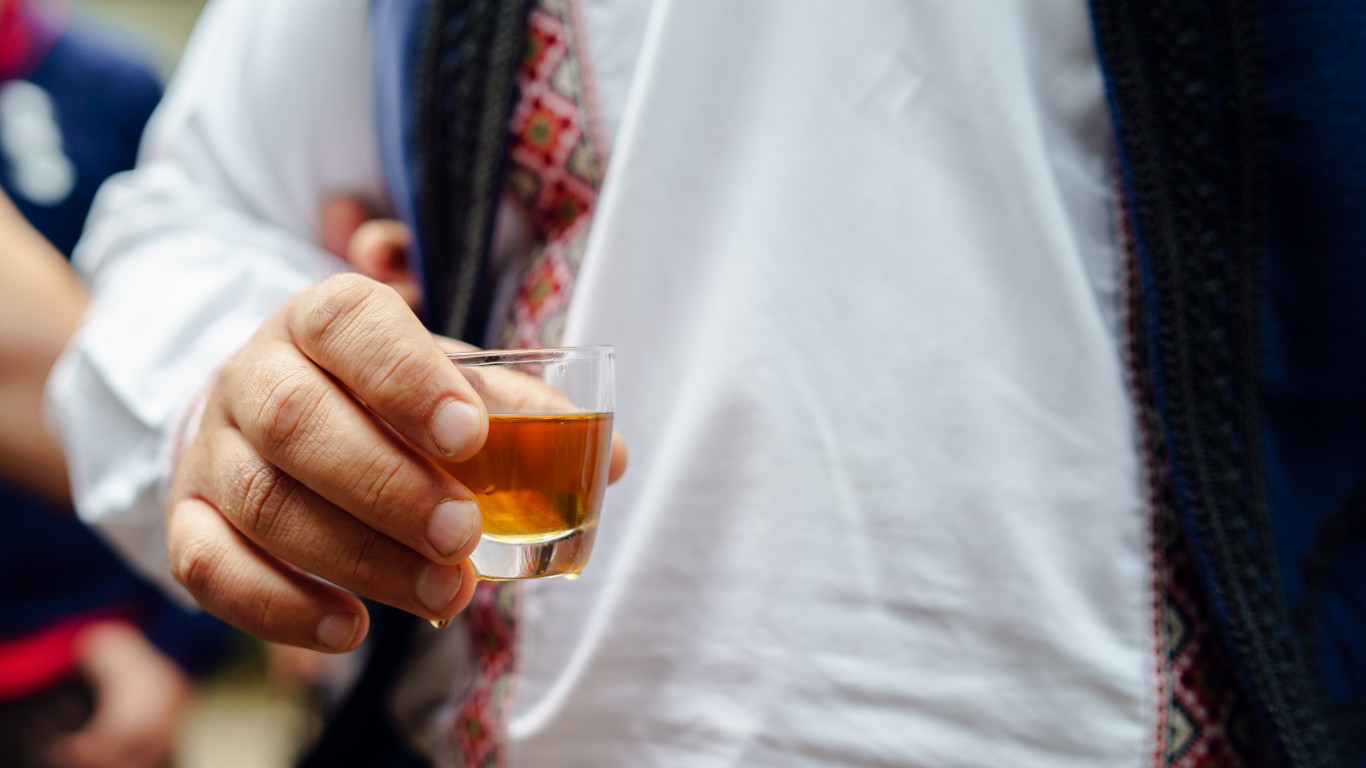
Bulgaria: Rakia
“Rakia” is a generic name for dry, clear fruit brandy, distilled from apricots, plums, pears, figs, and other fruit. Though it is produced commercially, it is also often distilled in small quantities at home. Archeological evidence shows that rakia has been consumed in Bulgaria at least since the 14th century.
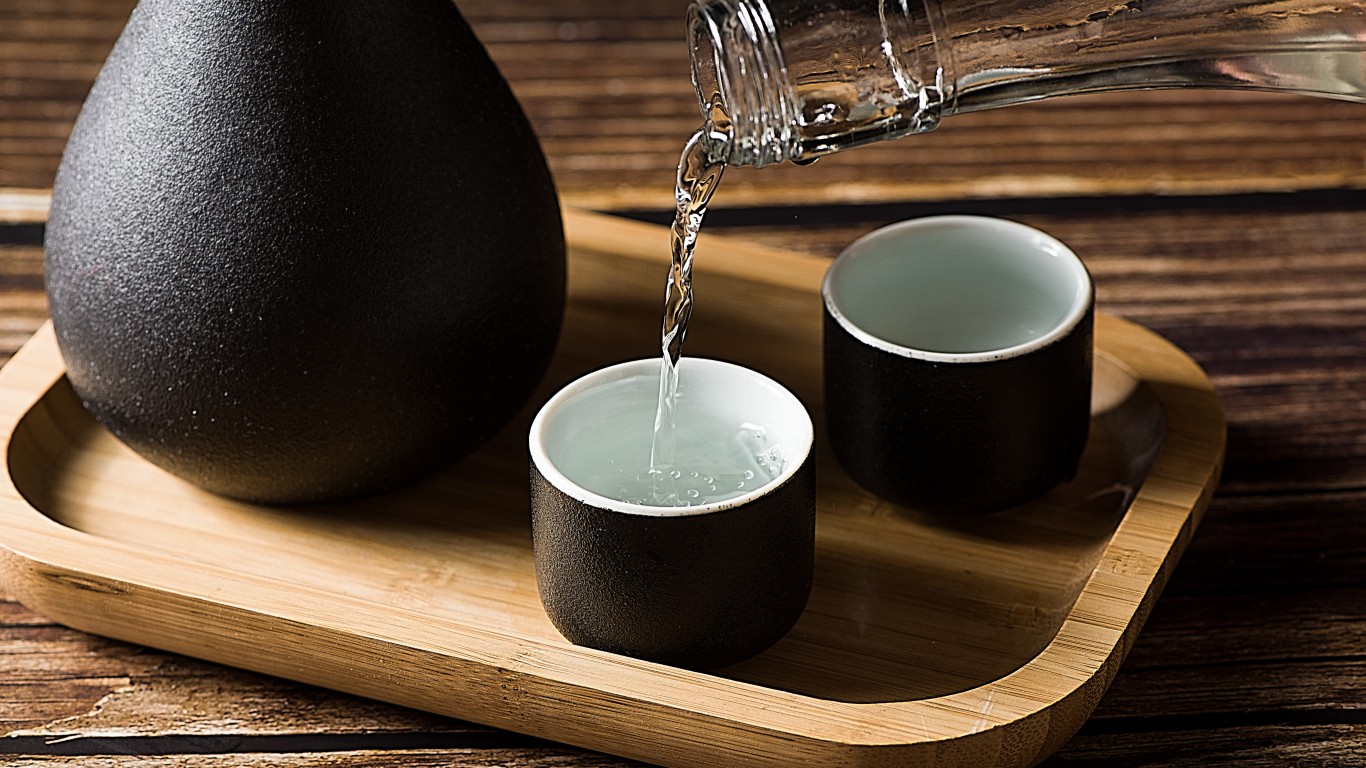
China: Baijiu
Baijiu is a clear, potent alcohol (sometimes as strong as 120 proof) distilled from fermented sorghum and sometimes other grains. It is the world’s most popular liquor, with global sales — which are almost entirely within China — exceeding those of whisky, gin, vodka, rum, and tequila combined.
[in-text-ad]
Colombia: Aguardiente
Originally from Spain, this powerful spirit’s name breaks down into the Spanish words for “water” and “fiery,” so it’s literally “firewater.” Aguardiente is popular in many parts of Latin America, but probably nowhere more than in Colombia and especially in the country’s Andean region. It is made from fermented sugarcane juice and flavored with anise.
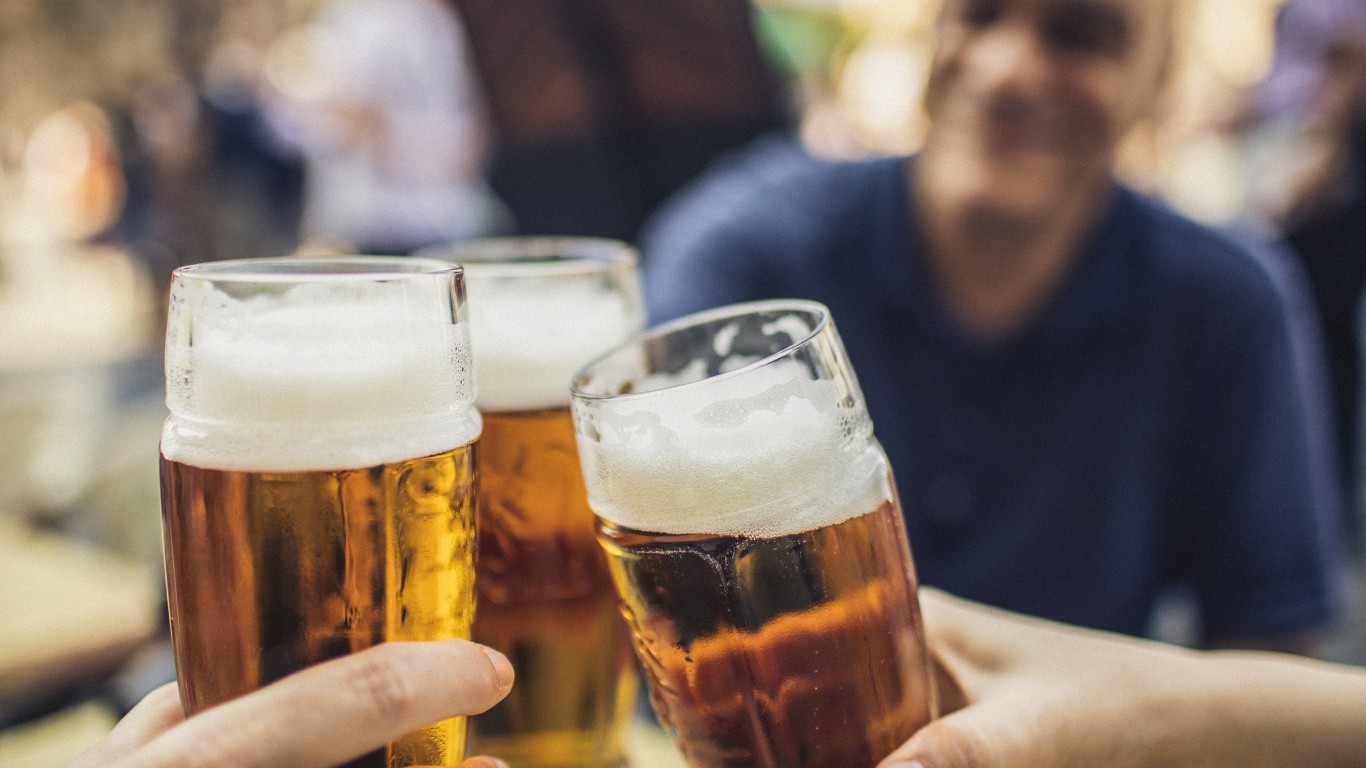
Czech Republic: Pilsner
Czechs recorded the highest per capita beer consumption in Europe in 2019, at 142 liters — almost 38 gallons. The Czech Republic’s own contribution to the beer world is the pale golden lager style called pilsner, which takes its name from the city of the same name (now called Plzeň), where the original example, Pilsner Urquell, has been brewed since 1842. (America’s famed Budweiser was originally a Czech pilsner called Budějovický, and its makers have long battled Anheuser-Busch for the rights to market it as Budweiser in the U.S.)

Ethiopia: Tej
The country’s unofficial national drink, tej is a cloudy honey wine — similar to the mead of Northern Europe but flavored with the leaves of an African shrub called gesho. Not coincidentally, Ethiopia is Africa’s largest producer of honey.
[in-text-ad-2]
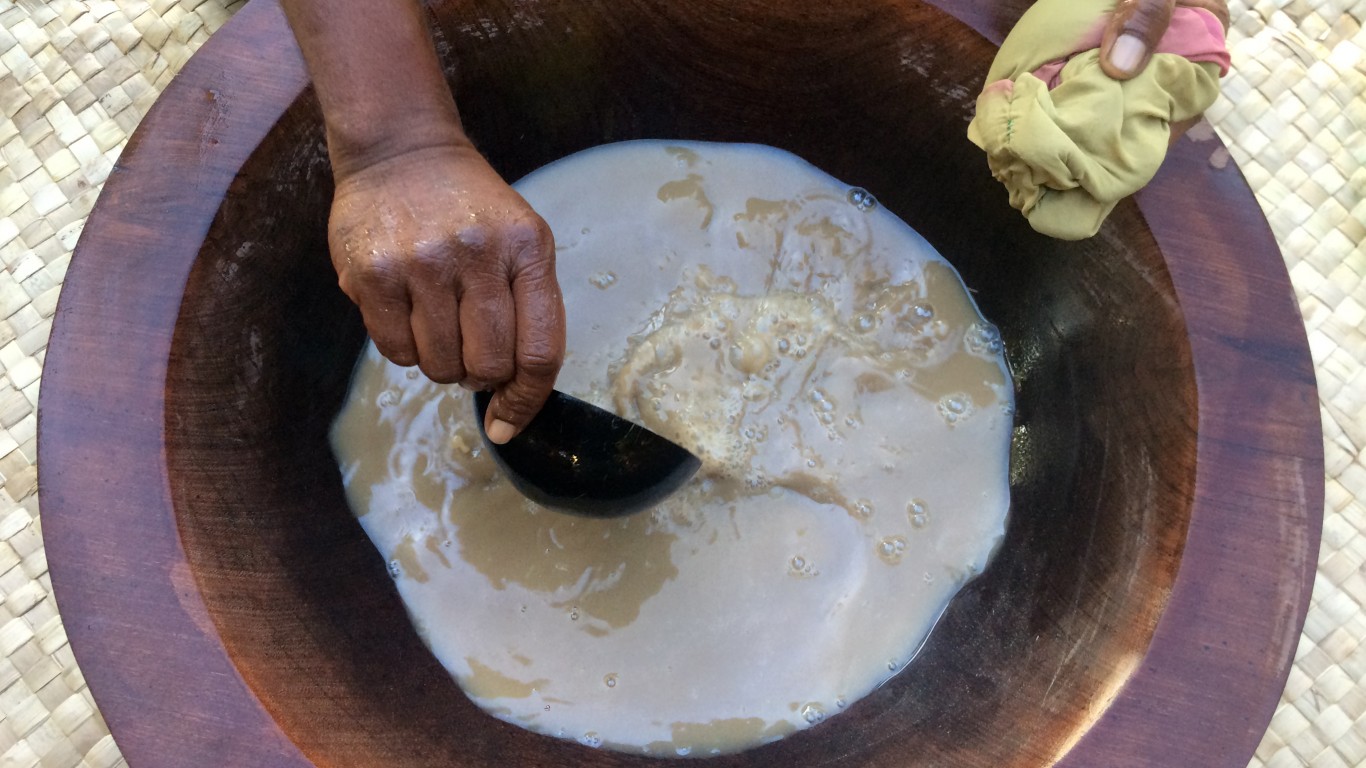
Fiji: Kava
While it’s consumed in other parts of the South Pacific, kava is particularly associated with Fiji. It’s an earthy, slightly bitter beverage that contains no alcohol but is known for its psychoactive properties, inducing feelings of well-being. It’s made from the ground roots of a kind of pepper tree.
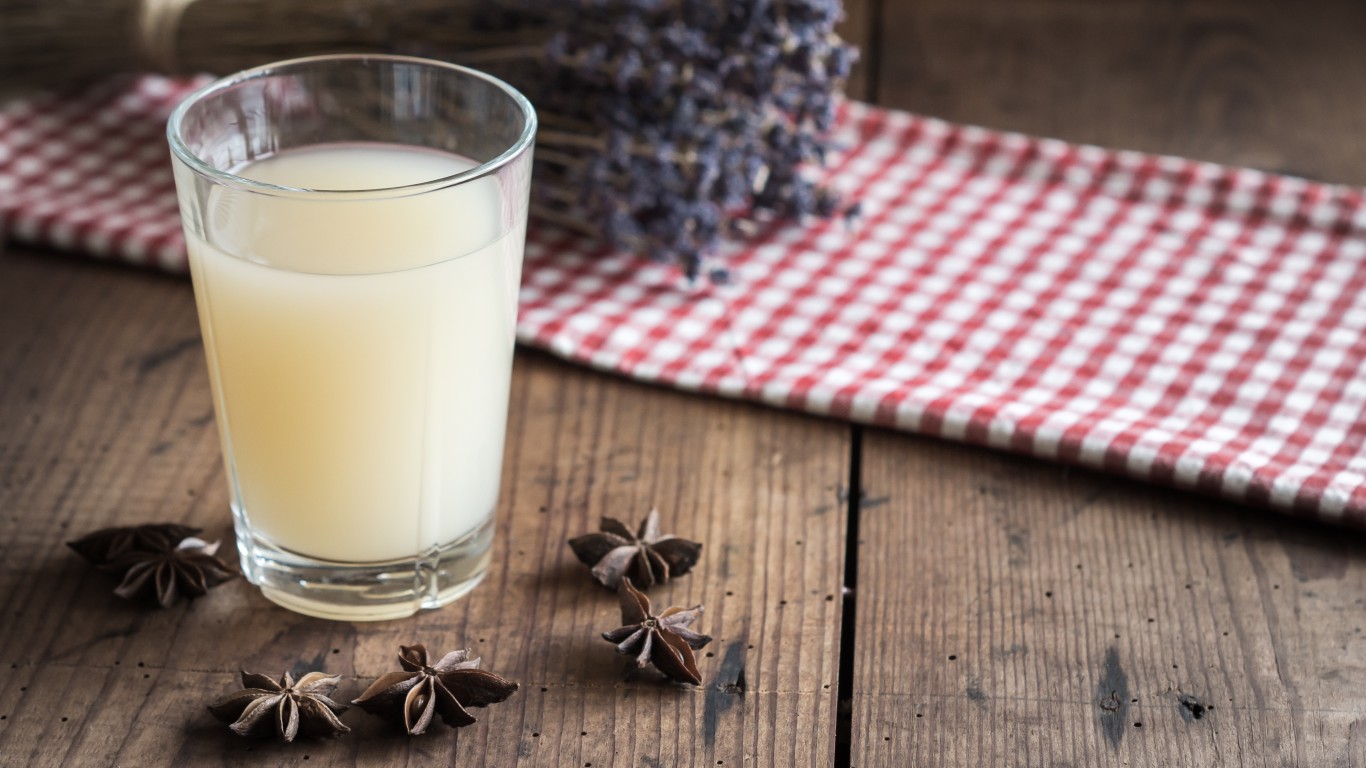
France: Pastis
Of course the stereotypical French drink is wine, and there are all those famous brandies like cognac, armagnac, and calvados — but the star anise-flavored spirit called pastis is a definitive French classic, associated especially with Provence but enjoyed in cafés all over the country. Introduced by Paul Ricard in 1932 as a substitute for the then-banned absinthe, it is traditionally mixed with water, which turns it a distinctive milky yellow dolor.
[in-text-ad]

Germany: Lager beer
It’s no secret that Germans are among the world’s thirstiest beer-drinkers, and there are many styles produced in (and imported into) the country. The most popular lager brand is Beck’s, which is a German version of Czech-style pilsner. Not all lager is pilsner, however (pilsners tend to be more heavily hopped), and a wide range of lagers may be found in German steins.
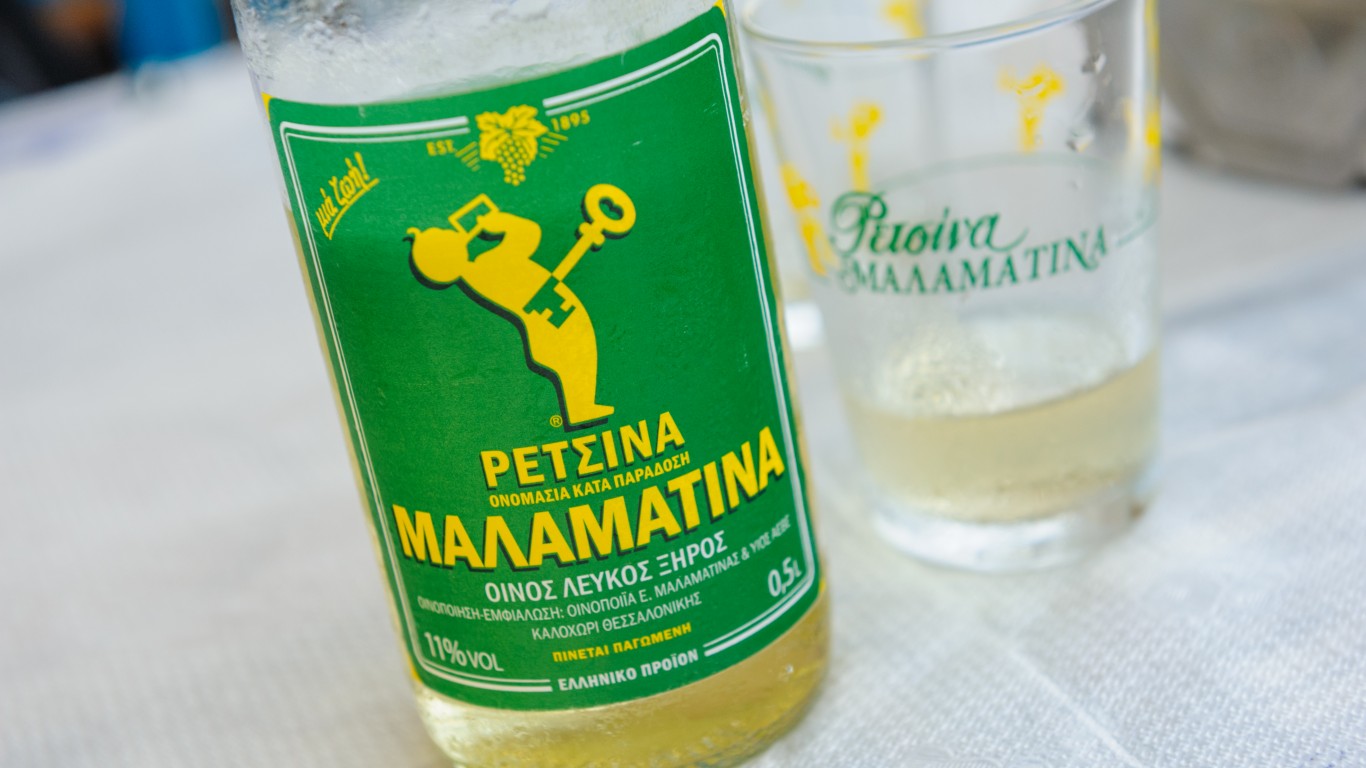
Greece: Retsina
The signature Greek spirit is ouzo, which has similarities to France’s pastis. What’s absolutely unique to Greece, though, is retsina — wine flavored with Aleppo pine resin. The idea originated with the Ancient Greeks, who sealed clay amphorae with resin in pre-cork-and-bottle days to keep out the air. The resin lent its flavor to the wine, and by the time more efficient means of preserving the wine were invented, people had come to enjoy the piney tang.
Hungary: Pálinka
Pálinka is the Hungarian version of the clear, potent fruit brandies produced all over Eastern and Central Europe. Apples, plums, and pears are among the fruits used to make it, but one of the most popular varieties is barackpálinka, based on apricots.
[in-text-ad-2]

India: Lassi
Every Indian restaurant menu seems to offer mango lassi — diluted yogurt flavored with mango pulp. There are other versions of this definitive Indian beverage, though, including some flavored with saffron or rosewater, a salty lassi that is basically diluted yogurt with salt, and even bhang lassi — infused with cannabis.
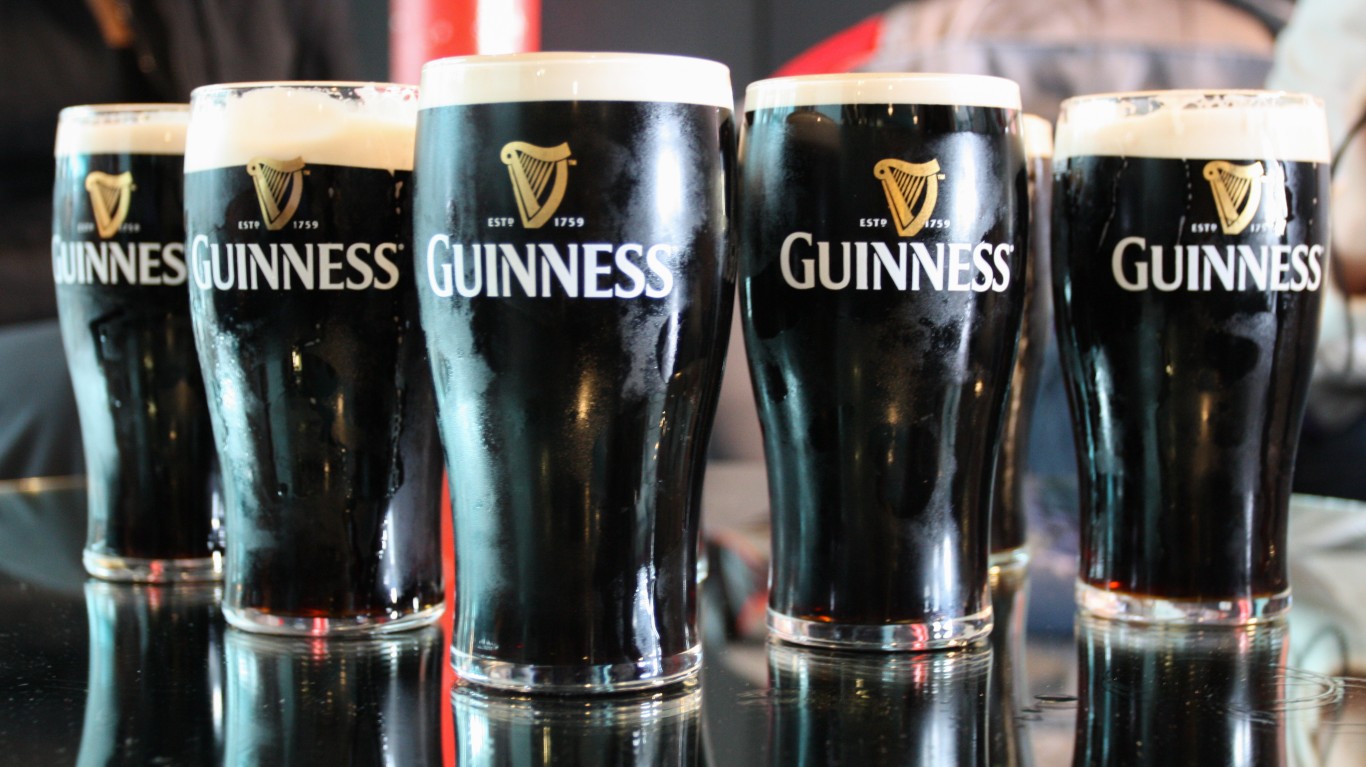
Ireland: Guinness Stout
Irish whiskey is becoming more and more popular around the world, and new distilleries are appearing all the time in Ireland. But the country’s best-selling alcoholic drink is this famous stout — first brewed in Dublin in 1759. Filling a glass with it properly from a tap is considered an art form.
[in-text-ad]

Italy: Wine
Wine is made in at least 70 countries around the world, from Armenia to Zimbabwe, but Italy produces more than anyone else, handily outpacing runners-up Spain and France. Wine is made in every one of the country’s 20 regions, from the Alps almost to North Africa. Grapevines grow so abundantly there that the Greeks dubbed the peninsula Oenotria — the land of wine.
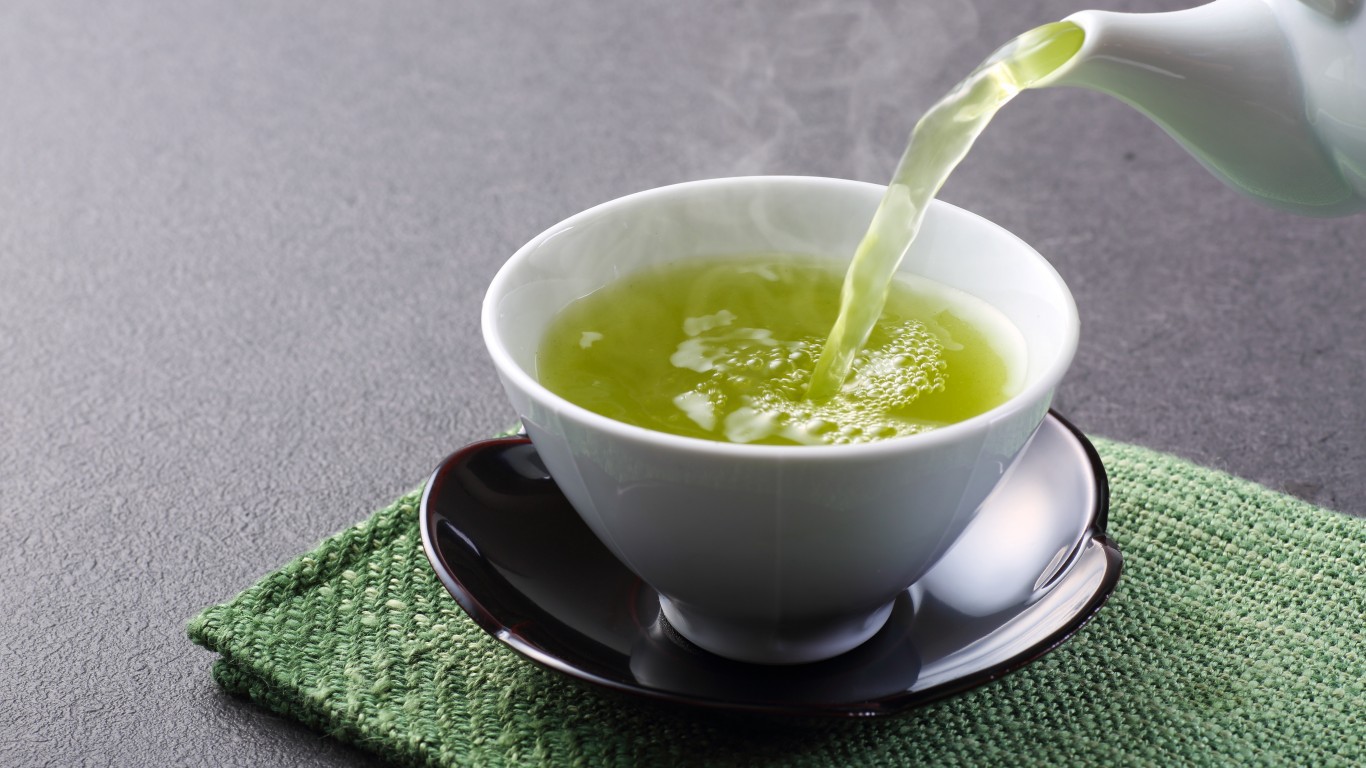
Japan: Green tea
Japan is the second-largest consumer of green tea in the world, after only China. About 80,000 tons of green tea leaves — which haven’t been dried and oxidized like those for black and oolong teas — are brewed in the country every year, and the rituals of the Japanese tea ceremony are an indelible part of the country’s culture.
Malta: Kinnie
In effect the national soft drink in this small island nation, Kinnie is a carbonated beverage made with bitter orange juice flavored with wormwood (an herb best known as an ingredient in absinthe). It was introduced by a local food and beverage company in 1952 to compete with Coca-Cola.
[in-text-ad-2]
Martinique: Rhum agricole
Distilled from fermented sugarcane juice (like Brazil’s cachaça) instead of molasses like most rum, rhum agricole — literally “agricultural rum” — is the signature alcoholic drink of the French-owned island of Martinique (and nearby Guadeloupe). Granted an appellation d’origine contrôlée certification by the French government, just like some of France’s wines, it is often aged to become a superior sipping spirit like cognac.

Mexico: Tequila
There’s no question what Mexico’s signature drink is. The Spanish introduced the technique of distillation to Mexico, and by around 1600, agave juice — which pre-Columbian peoples had brewed into a mildly alcoholic drink called pulque — was being distilled into hard liquor. Made today exclusively from the blue agave plant, tequila can be produced only in the state of Jalisco and portions of Guanajuato, Michoacán, Nayarit, and Tamaulipas.
[in-text-ad]
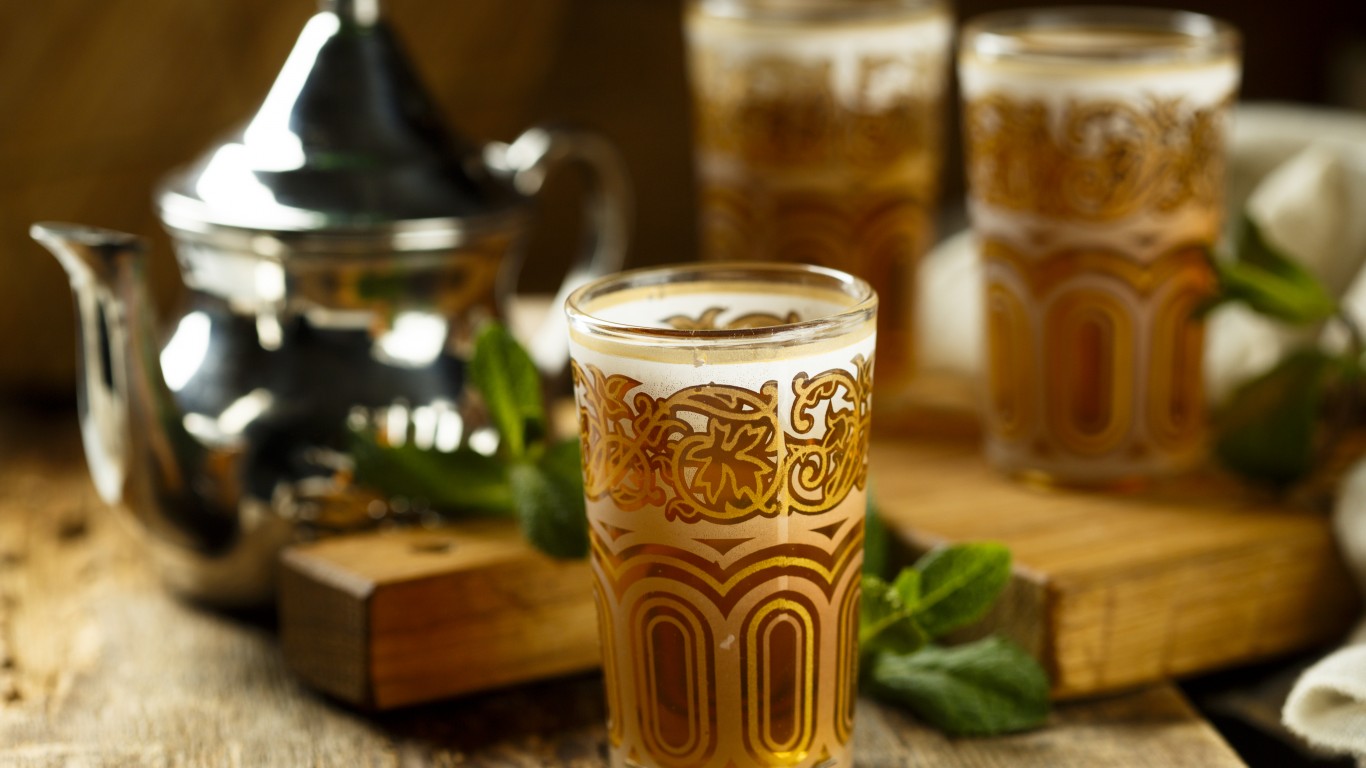
Morocco: Mint tea
A sweet green tea flavored with spearmint leaves, mint tea has been an essential beverage in Morocco, as elsewhere in North Africa, since the 19th century. In social situations, it typically takes the place of alcoholic drinks, which are generally avoided by Morocco’s Muslim population.
The Netherlands: Jenever
The ancestor of everyday gin, jenever (or genever) is a strong spirit flavored with juniper berries. Said to have been invented by a Dutch alchemist in the 17th century (though it may be older), it is made today in two general categories. The first, jonge (young), is based on neutral spirits made from grain or sugar beets and is vodka-like. The other, oude (old), is made with various grains, is sometimes wood-aged, and resembles whisky more than vodka.

Peru: Pisco
A grape brandy often described as Peru’s national drink (though neighboring Chile also claims it), pisco was invented by the Spanish in the 16th century. One popular way of drinking it is in a pisco sour, blended with egg whites, lime juice, simple syrup, and bitters.
[in-text-ad-2]

Poland: Vodka
Though it is now made all over the world and is associated mostly with Russia, vodka traces its origins back to late 14th-century Poland, and it remains the most popular form of alcohol in the country to this day. Though it may be distilled from various grains, as elsewhere, potato vodka is a particular Polish specialty.
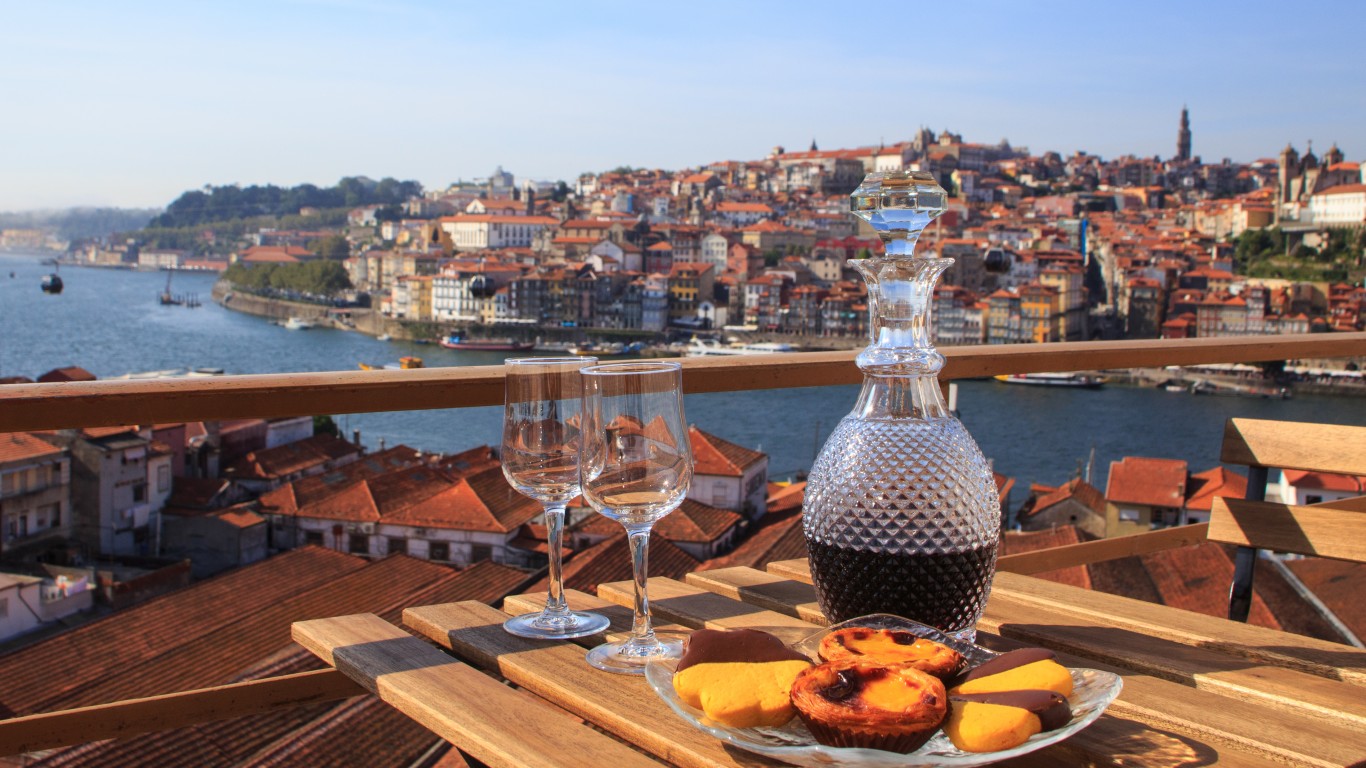
Portugal: Port
With a name that echoes its country of origin, port is a category of wine fortified with distilled spirits, which both increases its alcohol content and renders it more stable (the process was originally developed so that the wine didn’t spoil on its long sea voyage to England). Produced in the Douro Valley, it is mostly red and sweet, though drier versions and even white port exist. Vintage port, made only in the best vintage years and aged for long periods in the bottle, is considered one of the world’s great wines.
[in-text-ad]
Romania: Țuică
Another of the fiery fruit brandies common to Eastern and Central Europe, țuică is made exclusively from plums. It is usually clear, but some examples are aged in mulberry casks, giving them a yellowish tinge. A double-distilled version can reach a strength of 130 proof.
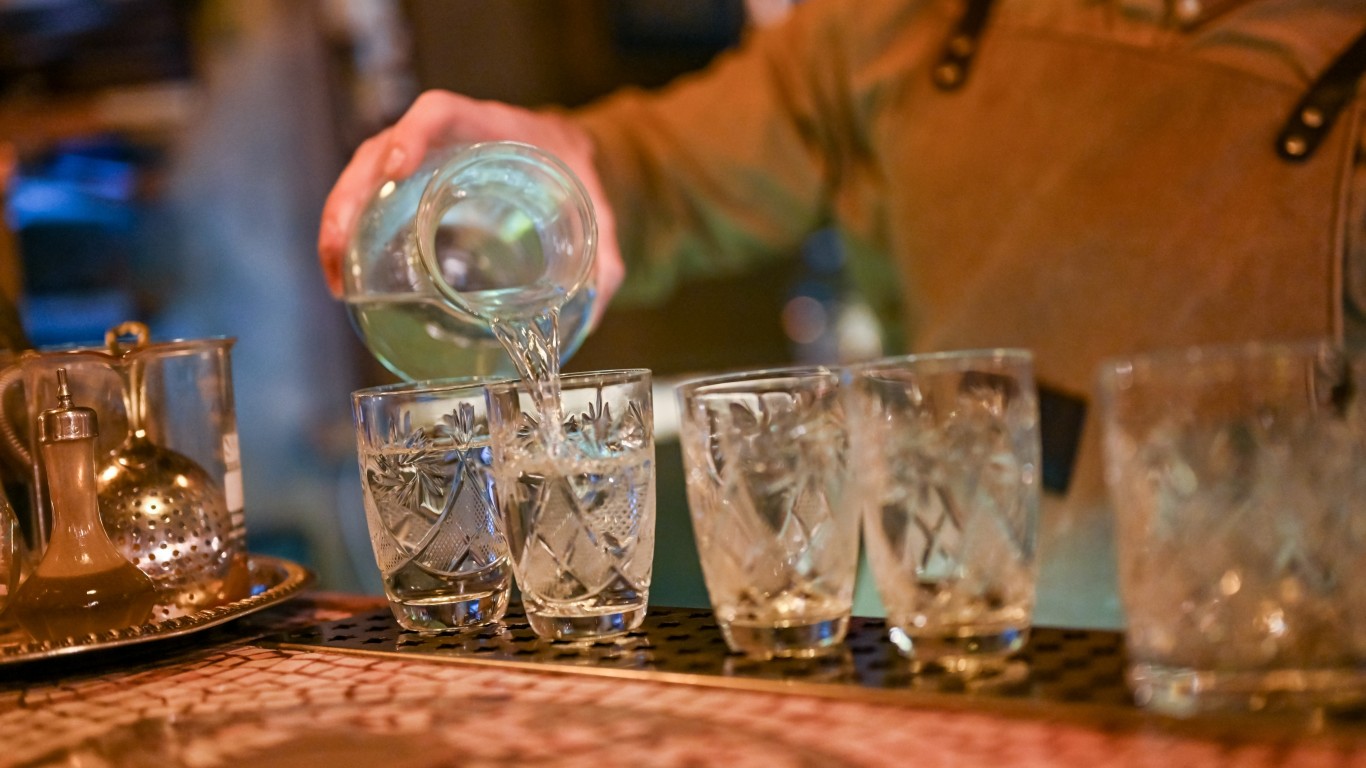
Russia: Vodka
Though Poland claims its invention, vodka is said to have been brought to the country by Genoese merchants at almost the same time as its first Polish mention. The Russians claim to have improved on the recipe, and by the 19th century, it had become the essential tipple at all levels of Russian society.
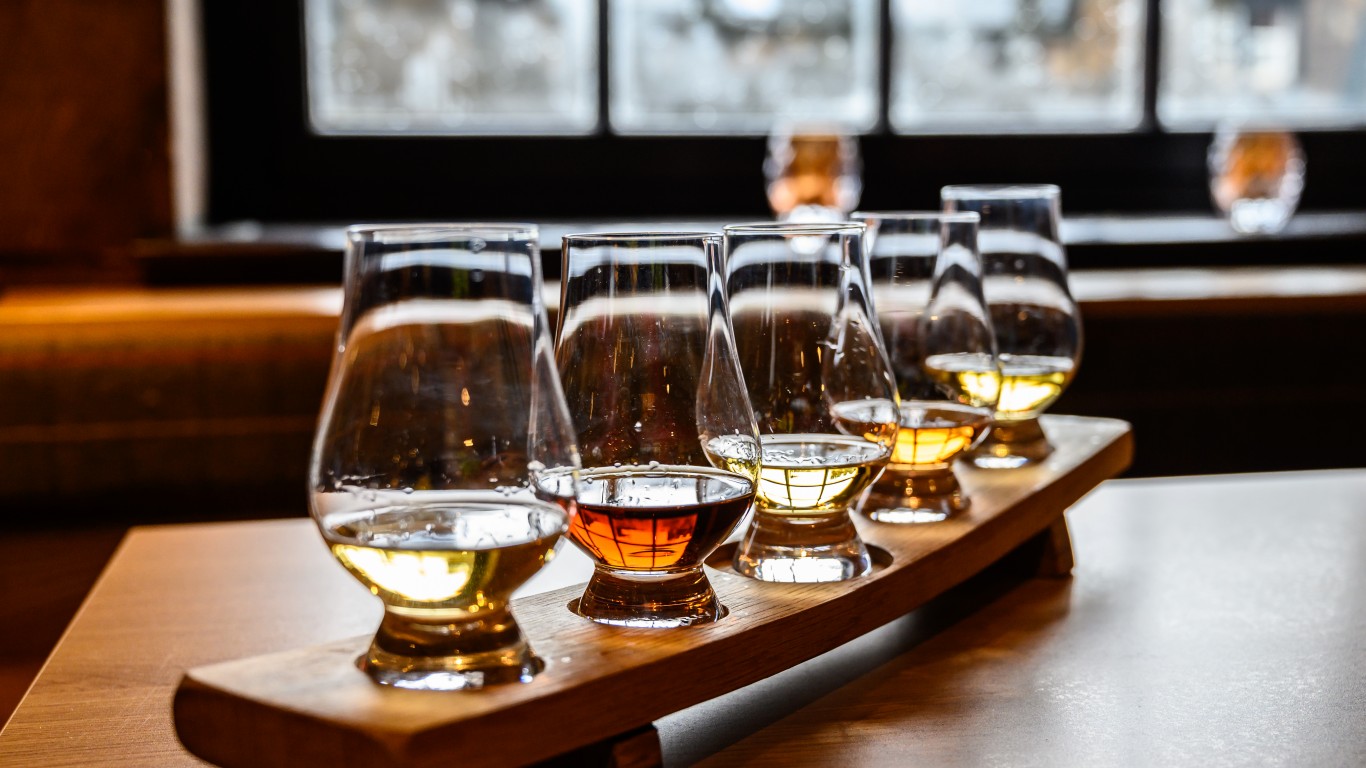
Scotland: Scotch whisky
Even the Scots will admit that they learned how to make whisky from the Irish, but the world-class spirit known as Scotch has become by far the country’s most famous drink. Made from malted barley or unmalted grain (or, in most blended whisky, usually a combination of the two), it must reside in oak barrels for at least three years. The premium examples are aged for 25 years or more.
[in-text-ad-2]
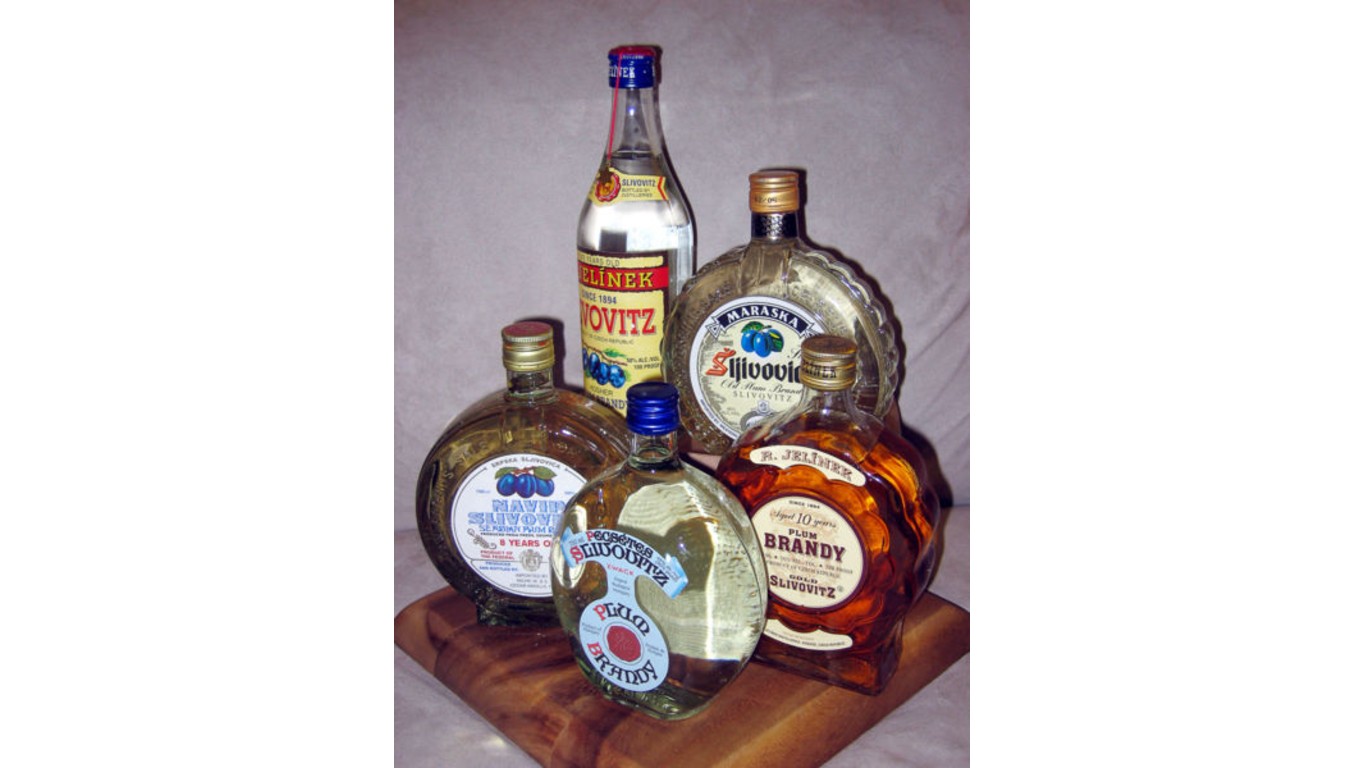
Serbia: Šljivovica
Šljivovica (or slivovitz) is still another clear, strong fruit brandy. Considered Serbia’s national drink, it is made from plums — and the plum, not coincidentally, is considered the country’s national fruit. First distilled in the late 19th century, it has been called “the queen of Serbian brandies.”
South Korea: Soju
A distant cousin of China’s baijiu, this definitive Korean liquor, first produced as early as the 13th century, is made from various grains or sometimes potatoes or sweet potatoes. Unlike some other Asian spirits, it sometimes has an alcoholic content not much higher than that of wine.
[in-text-ad]

Spain: Sangria
The Spanish love their wine and beer, but the most popular and typical café drink in much of the country — for locals as well as tourists — is this refreshing wine punch. Recipes vary, but it nearly always involves red wine, often Rioja, enhanced with chopped fruit (peaches, apples, berries, etc.) and sometimes with brandy or liqueur of some kind added. Sangria made with white wine is a recent innovation that is far less common.
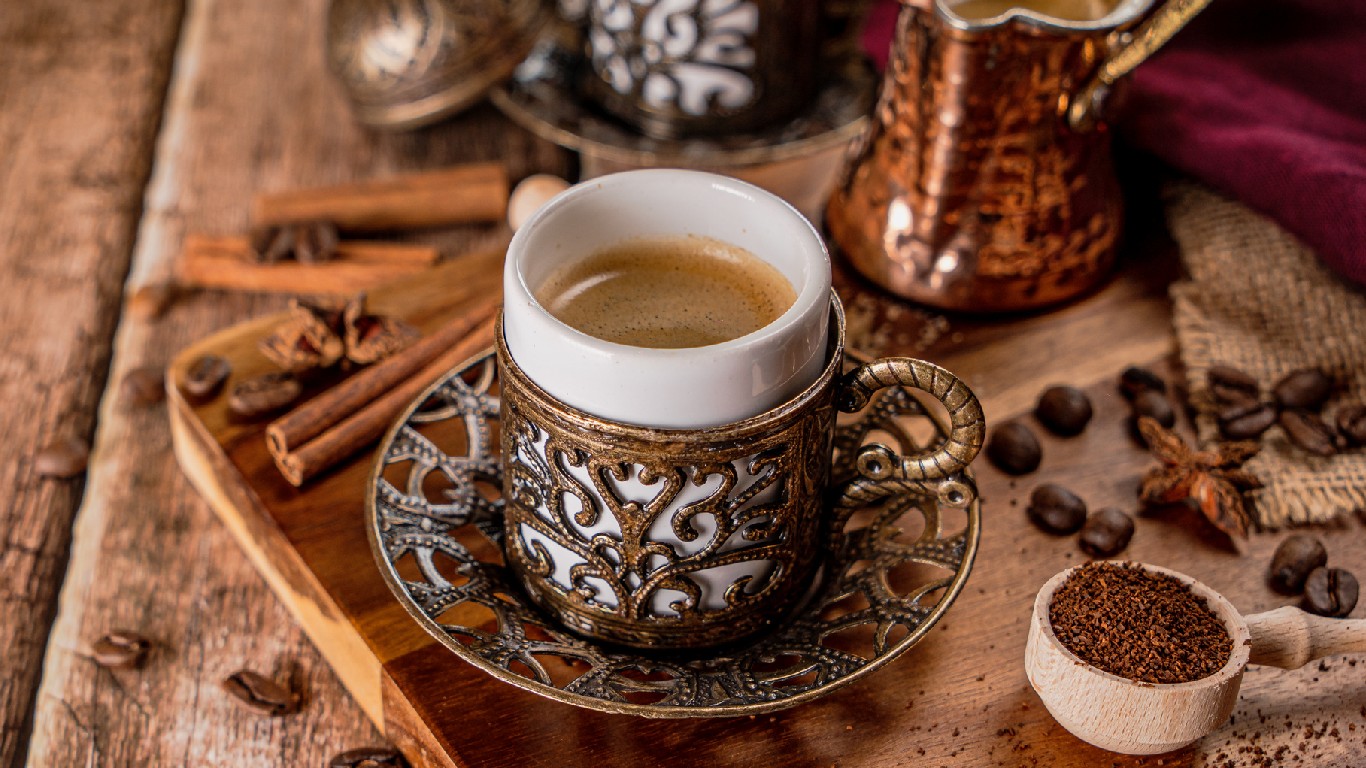
Turkey: Turkish coffee
Turks love their raki, an anise-flavored liquor, and there is a growing Turkish wine scene, but the most common beverage throughout the country is coffee made in a particular way. The beans are ground to a powder and mixed with water, which is brought to a boil in a long-handled copper vessel called a cezve or ibrik. After drinking the coffee, fortune-tellers turn the cup onto a saucer and predict the future from the patterns the grounds form.

United Kingdom: Tea
The Brits drink a lot of beer and cider, can be noted wine connoisseurs, and enjoy their gin, but the most emblematic British beverage — considered a key facet of the nation’s social culture — is tea, which is poured at regular intervals throughout the day. The U.K. is one of the world’s largest consumers of the beverage, and many of the most famous tea companies are British. “Tea” also refers to a light meal that can include pastries and finger sandwiches — accompanied, of course, by tea.
[in-text-ad-2]

United States: Coca-Cola
Sure, we drink all kinds of things in this country, but surveys have repeatedly shown that Coke, which dates its origins back to 1886, is our favorite beverage. The term “Coca-Cola imperialism” (or “Cocacolonization”) has even become synonymous with the globalization of American culture.
Are You Still Paying With a Debit Card?
The average American spends $17,274 on debit cards a year, and it’s a HUGE mistake. First, debit cards don’t have the same fraud protections as credit cards. Once your money is gone, it’s gone. But more importantly you can actually get something back from this spending every time you swipe.
Issuers are handing out wild bonuses right now. With some you can earn up to 5% back on every purchase. That’s like getting a 5% discount on everything you buy!
Our top pick is kind of hard to imagine. Not only does it pay up to 5% back, it also includes a $200 cash back reward in the first six months, a 0% intro APR, and…. $0 annual fee. It’s quite literally free money for any one that uses a card regularly. Click here to learn more!
Flywheel Publishing has partnered with CardRatings to provide coverage of credit card products. Flywheel Publishing and CardRatings may receive a commission from card issuers.
Thank you for reading! Have some feedback for us?
Contact the 24/7 Wall St. editorial team.

 24/7 Wall St.
24/7 Wall St.

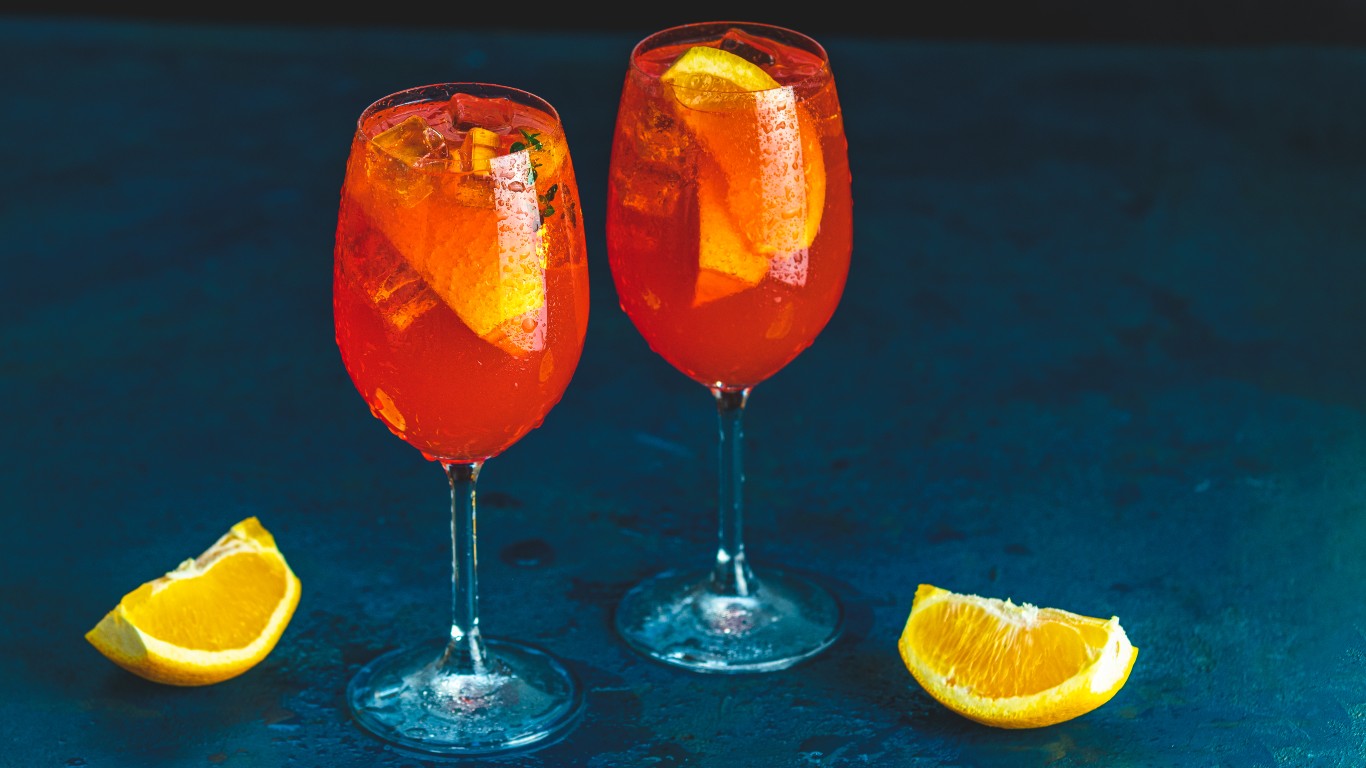 24/7 Wall St.
24/7 Wall St.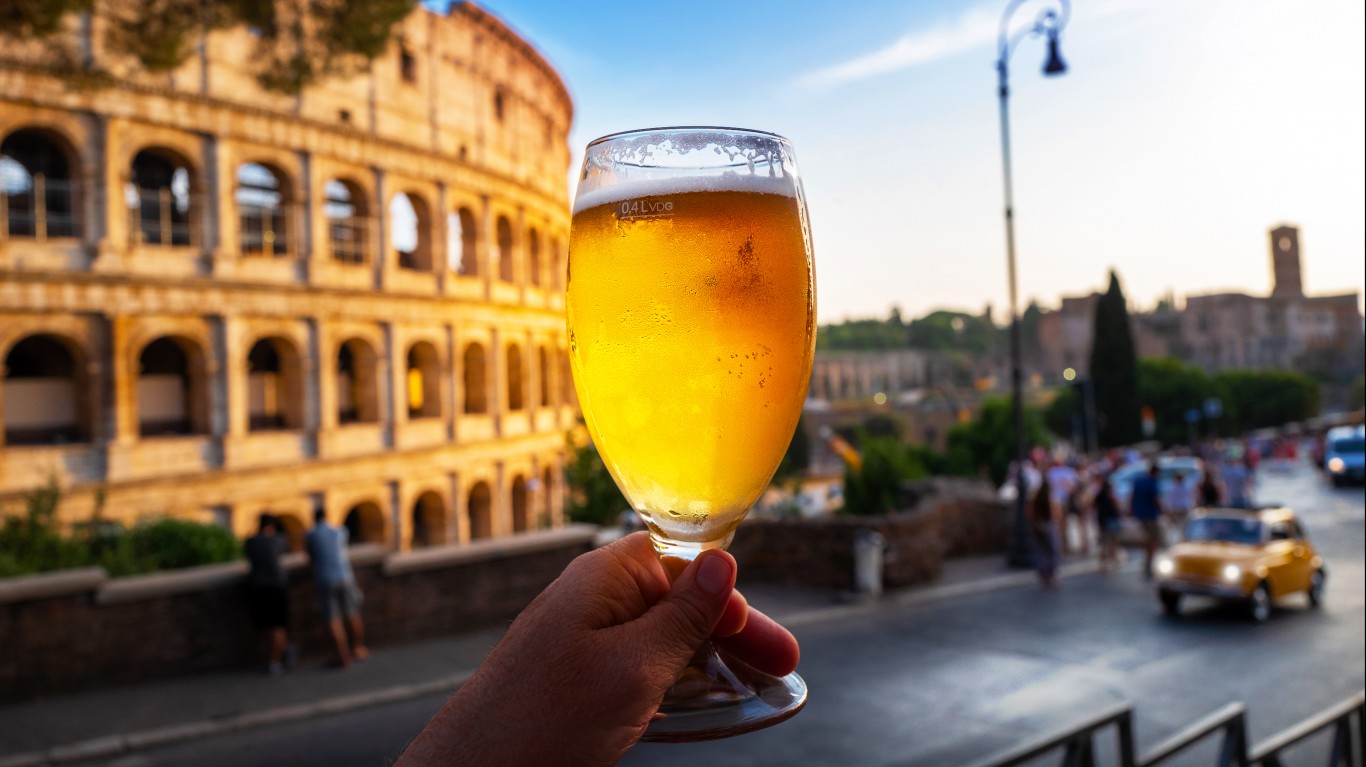 24/7 Wall St.
24/7 Wall St.